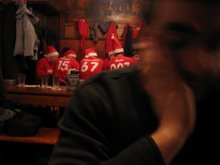
In a world flooded with information, the answer to the question “where to look?” becomes decisive in any exercise of Strategic Prospective that has in the phases of search and systematization of information a fundamental component. Because of the impossibility of including and monitoring everything, the focus of the exercise and its time horizon are instrumental in the definition of the “attention space” of a project. The Scenario-making process I co-organized in 2005 [2] about Tourism in Portugal constituted an example of how a definition of “attention space” evolves as the understanding of the dynamics of the phenomenon being analyzed increases. Therefore, it is natural that, initially, the angle is very wide, in order to prevent that anything with a great impact on the future of the sector goes forgotten. We chose, in the exercise devoted to Tourism, for an evolution/expansion of the traditional S.T.E.E.P analysis (Social, Technology, Economy, Environment, Politics). O S.T.E.E.P. is no more than a generic aid in the search for elements likely to influence the focus of the exercise, initiating a categorization and reducing the possibility of omission of potentially relevant elements. Our S.T.E.E.P. adapted/customized for Tourism in Portugal in a 2020 horizon contained the following eleven categories: Companies and Institutions Dynamics, Demography, Market’s Liberalization and Deregulation, Geo-economics, Sustainability, Globalization-Localization, Security, Mobility/Communications, Work and Timeout, Values and Lifestyles, Technology. Hence, we began training our observation, orienting it for categories already adapted to the phenomenon being analyzed. However, we understand that it is still necessary a greater calibration of our attention, conferring it, therefore, greater strategic value, so we ended up opting for the following categorization: “Departures and Arrivals” (including: explosion of Asian tourism – mainly Chinese, heading to Europe; new sending tourism in the European East – Russian, for example; migrations in Europe heading southwards – example: acquisition of second residence by Nordics in Southern Europe; emergency/consolidation of new extra European destinies – “exotic”), Demography and Subjective Trends of Demand (including: growing value of holiday time; growth of “active pensioners” and of “baby boomers” - active young seniors; transformation of family – grandparents and children as decision-makers; growth of “single travelers”; of products/services for experiences/emotions – authenticity, learning, etc.; growing importance of environmental questions – sustainability; worries about security – psychological barriers to mobility), Dynamics of the supply (change in the forms of intermediation towards personalization/diversification; personalization/diversification of the supply – stimulating the appearance of new markets; virtualization of promotion – internet, etc.). We started, therefore, looking at reality in a much more incisive way, being capable of sensing alterations in the context closer to our focus (Tourism in Portugal) that, in spite of eventually not being very visible, have an inherent potential impact.
[2] See Soeiro de Carvalho, P., Alvarenga, A. and Félix Ribeiro, J. M., “Análise Prospectiva: Turismo em Portugal no Horizonte 2020”, parte II.3. – pp. 75-85 – do estudo “O Turismo em Portugal” e pp.121‑125 da respectiva separata, Colecção Estudos Sectoriais, n.º27, IQF, Novembro 2005 (http://www.inofor.pt/default.asp?SqlPage=publication&EvPublicationId=102).
[2] See Soeiro de Carvalho, P., Alvarenga, A. and Félix Ribeiro, J. M., “Análise Prospectiva: Turismo em Portugal no Horizonte 2020”, parte II.3. – pp. 75-85 – do estudo “O Turismo em Portugal” e pp.121‑125 da respectiva separata, Colecção Estudos Sectoriais, n.º27, IQF, Novembro 2005 (http://www.inofor.pt/default.asp?SqlPage=publication&EvPublicationId=102).




No comments:
Post a Comment